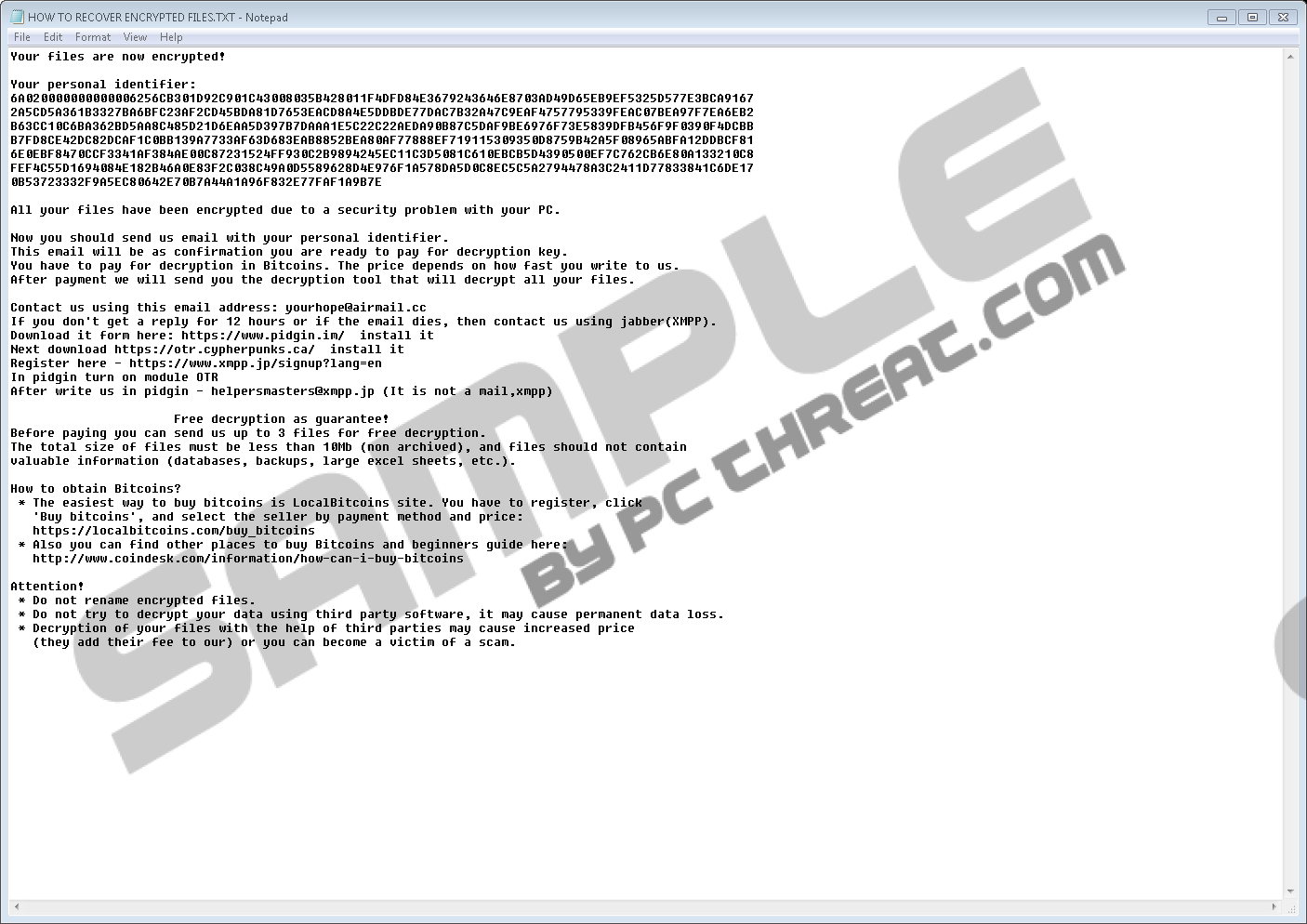
Consequently, the malware drops ransom notes (called _openme.txt or _readme.txt), which hold information regarding data decryption. The virus also adds random 334 bytes (includes RSA-encrypted key, ID and filemarker) to the actual file size.
#AIRMAIL CC UPDATE#
The ransomware may display fake Windows update window during the attack.Īfter these preparations, DJVU virus scans the system for personal files and encrypts the first 150 KB of them with cryptographic algorithms, so that the victims couldn’t access them anymore.
#AIRMAIL CC .EXE#
exe files ( updatewin.exe, build.exe, build2.exe, 1.exe, 2.exe and 3.exe or similar). tmp.exe format file) in LocalAppData folder and downloads several other. Upon a successful computer infiltration, the STOP/DJVU ransomware installs its executable (. This guide below includes all the information you need about this ransomware. Additionally, part of the files can be repaired using Media_Repair tool by DiskTuna. Good news is that the majority of the victims can recover files using STOP/DJVU Decryptor by Emsisoft and Michael Gillespie, or hope to recover them in offline encryption key was used. It has been observed that this ransomware strain changes extensions used regularly, usually several times a week. lltt file extensions to mark corrupted files. There are over 540 versions of the malware, the latest ones using. Victims typically download this virus from cracks or keygens or malicious email attachments.
#AIRMAIL CC HOW TO#

(including the file's name, without must be Tool currently -recursive performs decryption recursively on foldersįor this tool to work, the last 16 characters of the encrypted file's path Manually provide the encrypted file extension. o, -overwrite automatically overwrite decrypted files. Number of seconds to bruteforce, around the providedĮncryption time, or the file's last modification date Can be approximative if you pass the -delta t TIME, -time TIME time of the encryption (in seconds since Epoch), if Time of the encryption (local time, format YYYY-MM-DD.

h, -help show this help message and exit This key can then be reused to decrypt instantaneously any other file on the same infected machine.

Once one file has been decrypted, the initial value of time(0) is known, and so the corresponding generated AES key. A lesser value indicates "non-random" content (text content, or binary file with structured headers), which means the the right key has been found.A high value of entropy (~8 bits by byte) indicates a "random" result, likely to be the product of a decryption with a wrong key.The tool computes the avererage Shannon's entropy per byte of the decryption result.For each value, it generates an AES key using the derivation algorithm present in the malware, and try to decrypt the file with it.It bruteforces the probable value of the original time(0), using the file's last modification time as a hint.
#AIRMAIL CC FULL#
#AIRMAIL CC GENERATOR#
The random generator is seeded using srand(time(0)).During key-generation, the malware uses the weak msvcrt's rand() function, which is not cryptographically secure.Only one AES key is generated for every file on a same host.Decryption tool for the "Embrace", "PainLocker" and "Everbe" ransomwares files (with extensions and tool exploits several weaknesses in the malware to recover the files:


 0 kommentar(er)
0 kommentar(er)
